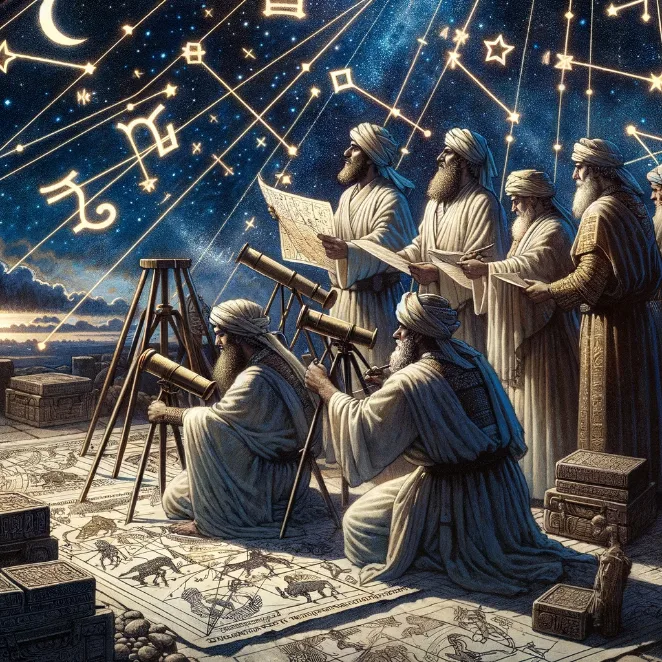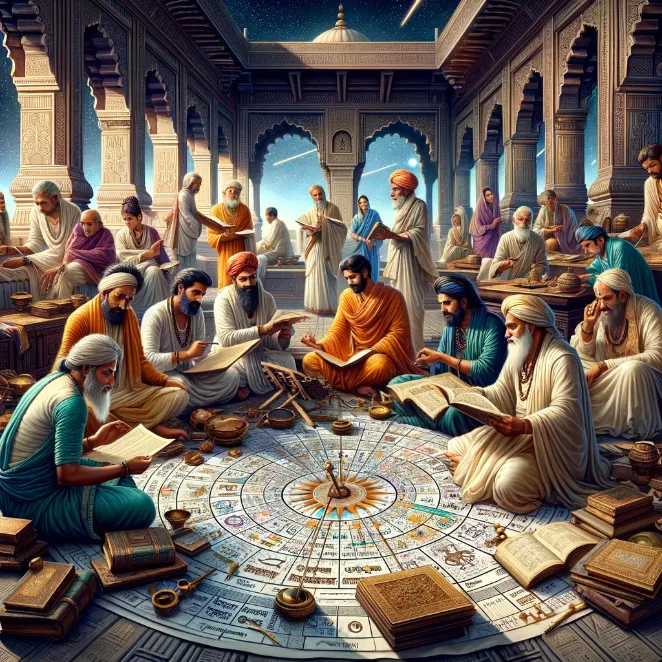
Tracing the Roots of Zodiac Signs
The horoscope signs, central to astrology, have fascinated humans for millennia. These twelve signs, forming the zodiac, are more than just symbols; they are a testament to ancient humanity's quest to understand the cosmos. The origin of these signs is a blend of astronomy, mythology, and symbolism, deeply embedded in various cultures. This article explores the fascinating history and origins of the horoscope signs, unraveling their journey from celestial observations to astrological symbols.
article by Priya Deshmukh
Early Astronomical Observations
The foundation of horoscope signs lies in early astronomical observations. Ancient civilizations, particularly the Babylonians, are credited with the development of the zodiac system as they meticulously charted the heavens. They identified patterns and constellations in the night sky, associating them with gods, animals, and symbols. This celestial map was not just for navigation or timekeeping; it was imbued with spiritual and predictive meanings. The zodiac was a celestial clock, with each sign corresponding to a thirty-degree segment of the ecliptic path that the Sun travels across the sky.
Greek Contributions to Zodiac Signs
The Greeks played a pivotal role in shaping the zodiac signs as we know them today. They were instrumental in integrating the Babylonian zodiac with their own cultural and mythological understandings. This fusion resulted in the renaming and reinterpreting of several constellations, infusing them with Greek mythological narratives. The Greek contribution was not merely a translation of symbols; it was a reimagining of the zodiac that enriched its symbolic and astrological significance.

Roman Influence and Standardization
Following the Greeks, the Romans further influenced the zodiac system, leaving a lasting impact on astrology. They gave the zodiac signs their Latin names, many of which are still used in contemporary astrology. The Roman period was crucial in standardizing these astrological symbols and interpretations, ensuring their transmission through the ages. Roman scholars and astrologers, such as Ptolemy, contributed to the consolidation of astrological knowledge, blending it with Roman mythology and culture. Their work ensured that the zodiac signs would continue to be a key part of astrological practices for centuries to come.
The Zodiac and Its Symbols
Each zodiac sign has a unique symbol, often derived from its constellation’s shape or associated myths. For example, the scales of Libra represent balance and were inspired by the constellation's symmetrical appearance. Scorpio's symbol, the scorpion, is linked to the myth of Orion, a hunter stung by a scorpion. These symbols were not arbitrary but were carefully chosen to reflect the traits and stories associated with each sign. Over time, these symbols became deeply ingrained in astrological practices, serving as shorthand for the complex traits each sign represents.

The Zodiac Across Cultures
The concept of the zodiac, fundamental to astrology, transcends geographical boundaries, with various cultures developing their unique interpretations. While the Greco-Roman zodiac is widely recognized, many other civilizations have their astrological traditions, each rich in symbolism and meaning. These diverse systems reflect the universal human endeavor to seek guidance from the heavens. The adaptation and interpretation of the zodiac across different cultures underscore the deep connection humanity shares with the cosmos.
Chinese Zodiac: A Unique Cycle
One notable example is the Chinese zodiac, which is based on a twelve-year cycle, each year linked to a specific animal. Unlike the monthly divisions in Western astrology, the Chinese zodiac's annual cycle associates each year with an animal and its reputed attributes. This system incorporates elements of Chinese philosophy, including Yin and Yang, and the five elements, creating a complex and multifaceted astrological tradition. The animals of the Chinese zodiac – rat, ox, tiger, rabbit, dragon, snake, horse, goat, monkey, rooster, dog, and pig – are believed to influence the personalities and destinies of individuals born in their year.
Indian Astrology: Jyotisha
Similarly, Indian astrology, known as Jyotisha, presents another rich astrological tradition. While it shares some similarities with Western astrology, such as the use of twelve signs, Jyotisha incorporates unique elements based on Hindu philosophy and Vedic scriptures. This system emphasizes the karmic aspects of an individual's life, offering insights into their spiritual journey and life challenges. The Indian zodiac signs, while corresponding to the same celestial constellations, are interpreted in the context of Hindu culture and cosmology, offering a distinct perspective on astrological phenomena.

Modern Astrology and Horoscope Signs
In modern times, horoscope signs have become a ubiquitous part of popular culture, often associated with personality traits and future predictions. While contemporary astrology is viewed more as a psychological tool rather than a predictive science, the zodiac signs retain their symbolic power. They offer a lens through which individuals can explore personality traits, relationships, and life challenges. The horoscope signs, deeply rooted in ancient astronomy and mythology, continue to evolve, adapting to contemporary contexts and understandings.
The horoscope signs, with their rich history and deep symbolism, are a fascinating blend of science, art, and mythology. They exemplify humanity's enduring quest to understand the universe and our place within it. As symbols, the zodiac signs bridge the ancient and the modern, the celestial and the personal, offering a unique perspective on the human experience.
Published: 11/14/2023
Modified: 11/14/2023
More predictions
Come back here soon to learn more about yourself and your future


Unveiling Your Astrological Locale
Embarking on a mystical voyage through time and space, astrology has unfailingly captivated minds with its proposed capacity to decode our earthly experiences through celestial movements. One tantalizing question it presents is: can the cosmos dictate our terrestrial coordinates, foretelling where we might eventually reside?


Astrology’s Insight Into Discovering Your Soulmate
In the boundless realms of stars and planets, astrology meticulously crafts a pathway that ostensibly guides individuals toward understanding their ideal companions – the enigmatic soulmates. As we meander through life, the quest for that one person who harmonizes with our essence becomes pivotal.


Deciphering Celestial Beginnings
Embarking upon a cosmic journey that intertwines celestial mechanics with earthly events, astrology has enshrouded humanity in a veil of mystical wonder and curiosity for millennia. A question that tantalizingly twirls amidst the astral journey is: Can astrology predict birth?